- This topic has 0 replies, 1 voice, and was last updated 2 years, 8 months ago by .
-
Topic
-
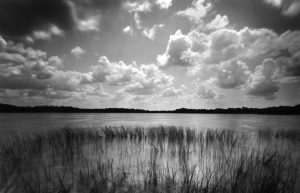
https://rudy-umans.pixels.com/featured/9-mile-pond-everglades-rudy-umans.html
About Photography
Initially the title was “The philosophy of Photography”. I chose this tittle, not only because it rhymes and it sounds semi-intellectual, but also because I thought it would capture what I wanted to talk about.
Turns out that only the rhyming part is true. For the rest, it sounds pretentious, not intellectual, and it doesn’t capture what I want to talk about.
I also thought that most people would instantly know what is meant with “the philosophy of…..”, that pretty much everybody would know the definition of philosophy, but do we…? Just to be sure, I looked it up and according to my internet, there are apparently about as many definitions of the word “Philosophy” as there are philosophies.
Now what? I thought about calling it “On Photography”, but then I realized that Susan Sontag already used that tittle, so to make a long story short, in the end I decided to keep it simple and just call it “About Photography”. There shouldn’t be any confusion about that, it is short and sweet, and it makes one wonder. “No confusion” and “wonder” in the same sentence sounds contradictive? Of course it does, but so does and is photography. This essay might as well be about life! As a matter of fact, maybe it is about life! We will see.

https://rudy-umans.pixels.com/featured/cypress-head-everglades-b-w-rudy-umans.html
If you thought I wrote all that just for the heck of it and because I like to hear the clicking of the keys on my keyboard, you are mistaken. There is a reason behind my madness. If you ask people “what is photography? You will get about as many different answers as there are definitions and opinions about philosophy. Some answers will be very technical, and some will be more about the impact of a photograph on either an individual or society or both.
The good news is that this should make it easier for me to write about it. After all, it seems I can write whatever I want. Everything I say is equally true and not true either way. The bad news is it makes it also a whole lot harder to write something digestible and without being too pretentious while it still needs to be a little entertaining and engaging as well, doesn’t it? In other words, this whole write up is just my opinion and the purpose is not to agree or disagree, but to make you think.Especially if you are a photographer, or any type of artist for that matter, it seems important to think about the big picture of what you are doing. Why do we do what we do? How does it impact me? Does it improve my life? How does it impact others? Does it improve their life? Do I even care if it does or doesn’t?
Contemplating about your art every now and then can only make it better.
Even though there are many aspects of photography and many different disciplines of photography, the four biggest ones are probably; Documentary, Architecture, Portrait, and Fine Art. Considering this is an art magazine and I am most familiar with fine art photography, this essay limits to the Fine Art part. Whatever that means. I have no idea myself, all I know is whatever we think it is, it is not.
Of course, there is an overlap between all these different disciplines, but when in doubt, think Fine Art. The type of camera doesn’t matter, and the subject doesn’t matter, although I will probably use landscape photography the most in my examples. That’s what I know best. Over the years, I found out though that landscapes and architecture are remarkably similar in approach as far as photography is concerned.
It would go way too far and way beyond my expertise to talk about documentary and portrait photography in depth and with some degree of knowledge. We would probably get Sigmund Freud and Carl Jung involved who respectively explored the conscious, desires, and fears of the individual and that of the collective. Who wants to go there? (hint: not me)
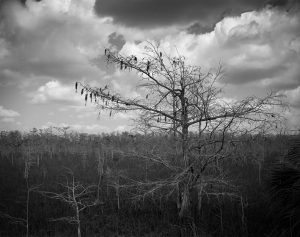
https://rudy-umans.pixels.com/featured/2-everglades-florida-pond-cypress-trees-5-rudy-umans.html
“I wanted to photograph clouds to find out what I had learned in 40 years about photography. Through clouds to put down my philosophy of life — to show that my photographs were not due to subject matter — nor special privileges, clouds were there for everyone — no tax on them yet — free.” – Alfred Stieglitz
My take on this is that Alfred Stieglitz’s passion for photography had a price. I am not sure why, but almost all his friends abandoned him at one point or another in his life. What I do know is he was very opinionated and very passionate about photography and art in general and very focused. Nevertheless, he always thought about others first. He wanted to help other artists succeed. That’s all he wanted. He even gave up his own photography for that. He was a very talented photographer, but he rather used his talents for the service of others. Him giving up his photography was the tax he paid. He gave up his freedom for others. It is true though, he was very privileged, and he had had access to equipment, subject matter, and resources most others did not. Clouds, however, were accessible to everyone free of charge regardless of a person’s circumstances or equipment he or she had to work with.
I am also pretty sure he looked at those clouds with a tear in his eye. Maybe not literary, but I am sure they made him think. I read several biographies about him, and I had always the impression that he was rather lonely despite his trust fund, entourage, and vast circle of acquaintances.
Is that what photographers are? Lonely? In general, I don’t think so, but I do think that many photographers and other artists alike, appreciate alone time. I cannot speak for anybody else, but when I am out and about shooting, I like to be alone. Frankly, I can’t concentrate with other people distracting me. I need to be alone with my camera and my (potential) subject. In a way, I, and others too I am sure, become connected with our subject, or at least, we are trying to and the more we succeed in those efforts, the better the result will be. Companions, no matter how much we love those people, are interruptions and are just in the way of our efforts. Photography is apparently a very personal thing.
Knowing what I know about Stieglitz, I think we would have gotten along just fine. He is one of my photography heroes.
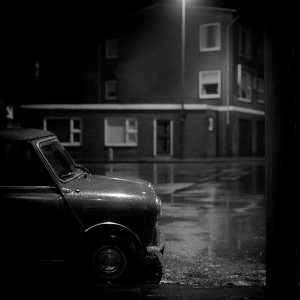
https://rudy-umans.pixels.com/featured/mini-rudy-umans.html
“A great photograph is a full expression of what one feels about what is being photographed in the deepest sense, and is, thereby, a true expression of what one feels about life in its entirety.” – Ansel Adams
Is that true? If we create a fine art photograph, a crappy one or a great one, do we lay all our cards on the table for everybody to see? Are our photographs an open book of our view on life?
Let’s find out.
There are a few cliches about photography and one of those is that a photograph is made a few inches behind the camera. Now the thing with cliches is they are (mostly) true otherwise they wouldn’t be cliches now, would they? Not according to Ansel Adams. If Adams’s sentiment was true, one would have to put all logic and brain power aside and completely surrender without constrains. That’s not going to happen! Our photography would be a mess, our lives would be a mess! We would be a mess!
In my case, I try to capture the mystical part of the Everglades. The magic, the inner beauty if you like, I do that in a specific way that speaks to some and doesn’t speak so much to others. Is that how I feel about life? Well, I am interested in the inner beauty, the mystical, and spiritual side of things and people and I believe that people are spiritual beings with a body as opposed to physical beings with a spirit. Somebody willing to look deep enough can probably see that notion in many of my images. Not in all my images though. For instance, I did a series with tin race cars and other toys for children and as far as I can tell, there is nothing spiritual about that. At least, not with that intend. It was just for fun. Now, fun can be spiritually uplifting, but that’s another story.
So, Ansel Adams could be right, but not as a rule. It all depends on the photographer and his/her perception and intend. Some psychologists feel that your perception is your reality. Something to think about I suppose.
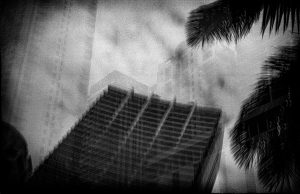
The City Wins
https://rudy-umans.pixels.com/featured/city-noise-rudy-umans.html
“Photography is not about what you see or how you see it, but about how you want to present it.” – Me
Building on that, I read somewhere that photography is not about what you see, but how you interpret what you see. I think that is true and those psychologists are right, our perception is our reality and that’s how we interpret it. However, there is inevitably a next step, and that step is how we want to present that interpretation. I feel that photography is not about what you see or how you see it, but about how you want to present it.
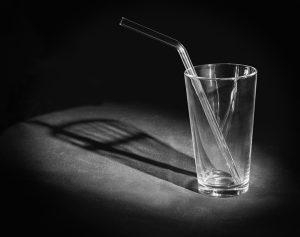
The Power of Emptiness
https://rudy-umans.pixels.com/featured/the-power-of-emptiness-rudy-umans.html
Case in point about perception, the other day, I posted this image of an empty glass and asked people for a tittle. If the titles people came up with are an indication how people look at a picture and how they perceive it, there is a great variety in perception. Some of the suggestions were: “Endless Possibilities”, “Empty shadow”, “The last straw”, “Vision of emptiness”, “Touched by Light”, “The morning after”, “Hollow reed”, and “Full of air”. I am not even trying to figure out where all these suggestions came from, but maybe, just maybe, my question revealed more about the people behind the answers than about the image itself. My objective was to show the power of nothing and, amazingly, one person suggested “The Power of Empty” as a title. Maybe that person is just as cockeyed as I am or maybe I just did my job. We will never know. We settled for “The Power of Emptiness” and “Zero Sugar” for another similar picture.
BTW, my question on social media was a sincere one and I had no idea at the time that it would actually be useful for this article. That came later.
Going back to the Everglades, as I wrote earlier, I like to show the mystical, the magic, the unobtainable side of the Everglades. This gives no doubt a certain impression of the Everglades you can relate to or not. Either way, that is how I want to present it. I just want to present that aspect of the Everglades, even though what I see and how I interpret the Everglades is much broader. There are much more “down to earth” aspects of the park that I choose not to show (I have in the past). I photographed two male alligators fighting hard over a female and I can assure you there is nothing magical or spiritual about that. It doesn’t say anything about how I feel about life either…. Scary a little. Sure. It was less than 10 feet in front of me, but other than that, just flesh, bones, and unadulterated lust.
Does that mean that photography is an illusion?
Short answer: Yes and no. It depends.
Somebody can capture the most beautiful landscape while behind the photographer is the biggest waste management dump one has ever seen. So, it is not an illusion because the landscape is beautiful and yes, it is an illusion because the surroundings are not exactly what you expect. The same with miniature landscapes. Somebody can photograph a mushroom with some moss, pine needles and all that, which could be in a enchanted forest or on one of those small “islands” on the parking lot of your favorite store.
There are 3 things in a photograph: The subject, the viewer, and the photographer and each one of these can make an image an illusion or not.
____
In all fairness I must warn you that the following is a little bit of a rant and I realize that my rant is not necessarily your rant. So, you can skip this if you like.
Nowadays there is a fourth thing in a photograph: Software. (Or apps as they call that now) With pretty much one or two clicks one can change the sky, colors, the overall mood, or the atmosphere of an image. All after the fact. The whole photographic process of taking the actual images becomes almost the afterthought instead of the other (normal) way around. Digital cameras are becoming more and more a disposable computer peripheral. I see so many landscape images on social media and elsewhere that make me wonder what planet that was on or even what solar system. To me, these types of images are all an illusion. I don’t want to talk about it! It is killing photography as we know it. The mid 20th century was the golden age of photography. Today with artificial intelligence and the overall depreciation of the craft, it seems we are entering the dark ages of photography. That’s going backwards and it upsets me! It is not that image manipulation is a new thing, it is not. It has been done for over 125 years now. Even in more modern times, but before digital, images were enhanced. Especially color landscape images. But enhancing is not the same thing as creating a whole new world. If I look at 80-ties and 90-ties well known landscape photographers like Galen Rowell and Robert Glenn Ketchum for instance. All their images are also saturated with color, but being pre-digital, that required skills, knowledge, and patience. Is that still the norm? How about tomorrow?
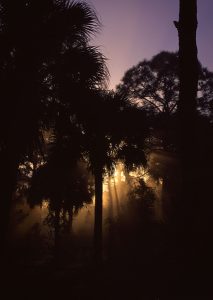
https://rudy-umans.pixels.com/featured/rise-and-shine-rudy-umans.html
Now, I must admit, I am not a complete purist, I capture analogue, but scan the images and process them in Photoshop. However, I limit my processing to cropping and dodging and burning. Not any different as one would do and has done in a traditional darkroom since the invention of film. (I have no space for a traditional darkroom)
While this is not an essay about the technical side of things, I like to mention as a side note that if you learn the dodge and burn tools and the curve tool in Photoshop, you can do most of the things an image might require.
So, forgetting for a moment that these recent apps and “creative” artificial intelligence are killing photography, where does that leave us?
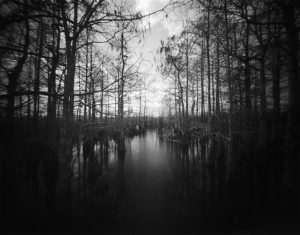
https://rudy-umans.pixels.com/featured/everglades-florida-pond-cypress-trees-rudy-umans.html
In my mind, photography is about capturing the nature of the things, the soul of things if you like, as you experienced it at the time of capturing. I think that is more or less the same for any discipline in photography. Whether that is landscape, portraits, architecture, a war zone, or even a snapshot. If you think about it, this is not that much different than most other aspects of our lives. Almost everything we do, and experience, brings out an emotion of some sort to the conscious mind and the subconscious mind. If the conscious and subconscious minds are in harmony, we feel alive and even doing the dishes can become a pleasant experience.
If we are aware of this, we understand photography and probably art in general in my opinion!
____
This is the second installment of my Series of blog posts about the different aspects of photography. Last time I talked about pinhole photography. https://ourartsmagazine.com/blog/2023/01/22/what-is-pinhole-photogrpaphy/ Future episodes will be about “Large Format Photography”, “What’s in the Bag”, “Every photographer should watch Bob Ross”,” Projects”, “If it is not printed, it is not a photograph”, and “My favorite photographers”. The order of these might change. If you have a subject you would like me to write about, please let me know in the comments.
All the images in this article, and many others, are for sale. Just click on the links.
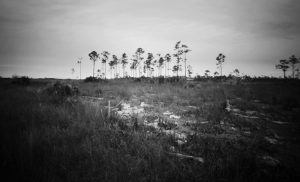
https://rudy-umans.pixels.com/featured/everglades-landscape-in-b-w-5-rudy-umans.html
Before I go, some disclaimers.
This is written about the more serious photography by photographers who invest in their passion either by time, devotion, money, or all the above. None of it is related to the quality of their photography or appreciation by others. That’s irrelevant.
Al these images were captured on film with minimal post processing.
Also, the above are strictly my personal opinions. There are no claims of the truth here. I am not a professional or anything else pertaining to the body or the mind. Just a regular guy who probably thinks too much.
This essay was 100% written by me. No Artificial Intelligence was used. That includes all the typos and grammar mistakes that only humans are allowed to make.
Rudy Umans
Saturday, March 18, 2023
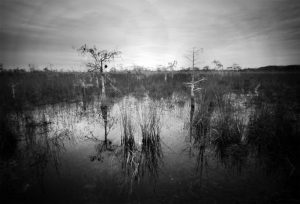 https://rudy-umans.pixels.com/featured/dwarf-cypress-trees-in-b-w-rudy-umans.html
https://rudy-umans.pixels.com/featured/dwarf-cypress-trees-in-b-w-rudy-umans.htmlhttps://ourartsmagazine.com/blog/2023/03/18/about-photography/ — Post Permalink
- You must be logged in to reply to this topic.